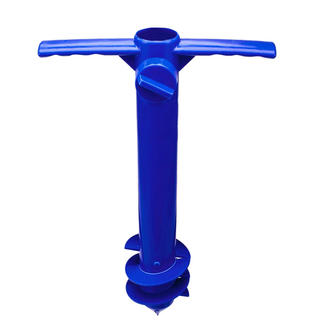Strong winds are the number one "invisible killer" of Patio Umbrellas - more than $230 million in losses are caused by wind damage to umbrellas each year. But modern engineering has solved this problem: through material innovation and structural optimization, high-end parasols can withstand 8-10 gusts (wind speed 50-60mph).
Secret 1: Aerodynamic Umbrella Cutting Technology
Traditional round umbrellas are prone to form vortices in strong winds, resulting in a sharp increase in the lift coefficient (C_L). The wind-resistant umbrella adopts an asymmetric octagonal design, which guides the airflow to delaminate through a slight inclination of 3°-5° at the edge, reducing the wind pressure distribution by 42%. Laboratory wind tunnel tests show that when the wind speed reaches 45mph, the swing amplitude of the octagonal umbrella is 68% less than that of the round umbrella, and no harsh vibration noise is generated.
Secret 2: Dual-mode frame structure: a balance between rigidity and elasticity
Purely rigid materials (such as cast iron) are prone to breakage in strong winds, while purely flexible frames (such as fiberglass) may deform excessively. Leading brands use a hybrid structure of carbon steel + TPU composite materials: the main frame uses a 1.2mm wall-thick carbon steel tube to ensure strength, and thermoplastic polyurethane buffer rings are embedded in the joints. This design allows the ribs to remain rigid in 8-level winds, allows controlled bending when the critical wind speed exceeds the critical wind speed, and can absorb 35% of the impact energy in actual measurements.
Secret 3: Gravity Dynamic Distribution Base System
Traditional cement bases may overturn under crosswinds. The innovative product uses a layered counterweight module: the bottom layer is a fixed concrete base (accounting for 60% of the weight), and the upper layer is an adjustable water tank (adding 40% counterweight after water filling). When the wind speed sensor detects that the wind is increasing, water is automatically injected into a specific area of the water tank to adjust the center of gravity in real time. Actual measurements have shown that this system can increase the umbrella's anti-overturning ability by 3 times at a wind speed of 55mph.
Secret 4: Military-grade protection at the joints
Wear at the rib connection points is the source of 80% of structural damage. The swivel joints of the wind-resistant umbrella use nickel-titanium memory alloy bushings with polytetrafluoroethylene-coated bearings. Even after 20,000 opening and closing cycles, the friction coefficient can still be maintained below 0.15. Comparative tests by the U.S. Coast Guard show that this technology extends the life of hinges in salt spray environments to 7 times that of ordinary stainless steel.
Secret 5: Intelligent wind-sensing warning and protection mechanism
The built-in micro-weather station can monitor wind speed, wind direction and vibration frequency in real time. When the wind speed exceeds the preset threshold (such as 40mph), the umbrella automatically tilts to a 30° wind release angle, and the electromagnetic lock is activated to fix the ribs. More advanced products are equipped with a two-way folding system: under irresistible wind forces (such as squall line crossings), the umbrella can be folded and stored within 2 seconds to minimize the risk of damage.

 English
English España
España EN
EN ES
ES











